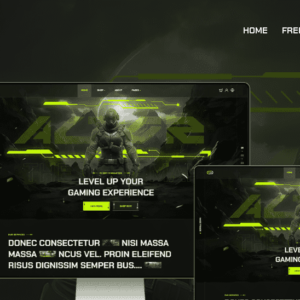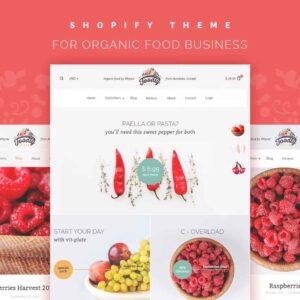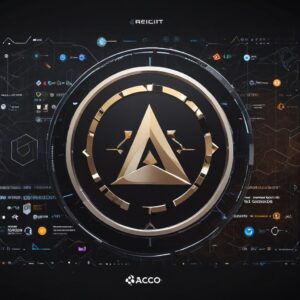
Top Free Prompt to AI Image Generators for Writers in 2024
Prompt to AI Image Generators for Writers
Introduction
Imagine a world where writers can bring their stories to life with vivid, custom-made images, all thanks to the rise of AI in creative writing. This is no longer a distant dream but a reality made possible by AI Image Generators.
Overview: AI Image Generators are revolutionizing the way writers create and visualize their work. These tools use advanced algorithms to transform text prompts into detailed images, providing writers with a powerful new way to enhance their storytelling.

AI has been making waves in various fields, and creative writing is no exception. From generating plot ideas to crafting entire stories, AI tools are becoming indispensable for writers. One of the most exciting developments in this space is the advent of AI Image Generators.
Table of Contents
What are AI Image Generators?
Definition: AI Image Generators are advanced tools that leverage artificial intelligence to create images based on text descriptions. By inputting specific keywords or detailed descriptions, these generators can produce images that align closely with the user’s vision. These tools utilize machine learning techniques, such as neural networks, to interpret the text and generate corresponding images.
Importance: AI Image Generators are crucial for writers for several reasons:
- Enhanced Visualization: They help writers visualize their ideas, making it easier to convey complex scenes and characters. By providing a visual representation of their thoughts, writers can better describe settings, characters, and events in their stories. This visualization aids in creating more vivid and engaging narratives.
- Creative Inspiration: By providing visual representations, AI Image Generators can spark new creative ideas and directions for a story. Seeing an image that aligns with a writer’s description can inspire new plot twists, character developments, or settings that the writer might not have considered otherwise. This can lead to more innovative and imaginative storytelling.
- Efficiency: These tools save time by quickly generating images, allowing writers to focus more on their writing. Instead of spending hours searching for the perfect image or trying to create one themselves, writers can use AI Image Generators to produce high-quality visuals in a matter of seconds. This efficiency can significantly speed up the writing process and reduce the time spent on visual content creation.
- Customization: Writers can obtain unique, tailored images that perfectly match their narrative, ensuring a personalized touch. AI Image Generators allow for a high degree of customization, enabling writers to specify details such as color schemes, styles, and specific elements they want to include in the image. This level of customization ensures that the images are not only relevant but also enhance the overall storytelling experience.
How AI Image Generators Work
AI Image Generators typically use machine learning models, such as Generative Adversarial Networks (GANs) or diffusion models, to create images. These models are trained on vast datasets of images and text descriptions, learning to associate specific words with visual elements.
- Generative Adversarial Networks (GANs): GANs consist of two neural networks, the generator and the discriminator, that work together to create realistic images. The generator creates images based on the input text, while the discriminator evaluates the images to determine if they look realistic. This process continues until the generator produces images that the discriminator cannot distinguish from real images.
- Diffusion Models: These models work by gradually transforming random noise into a coherent image based on the input text. Diffusion models have become increasingly popular due to their ability to produce high-quality images with fine details.
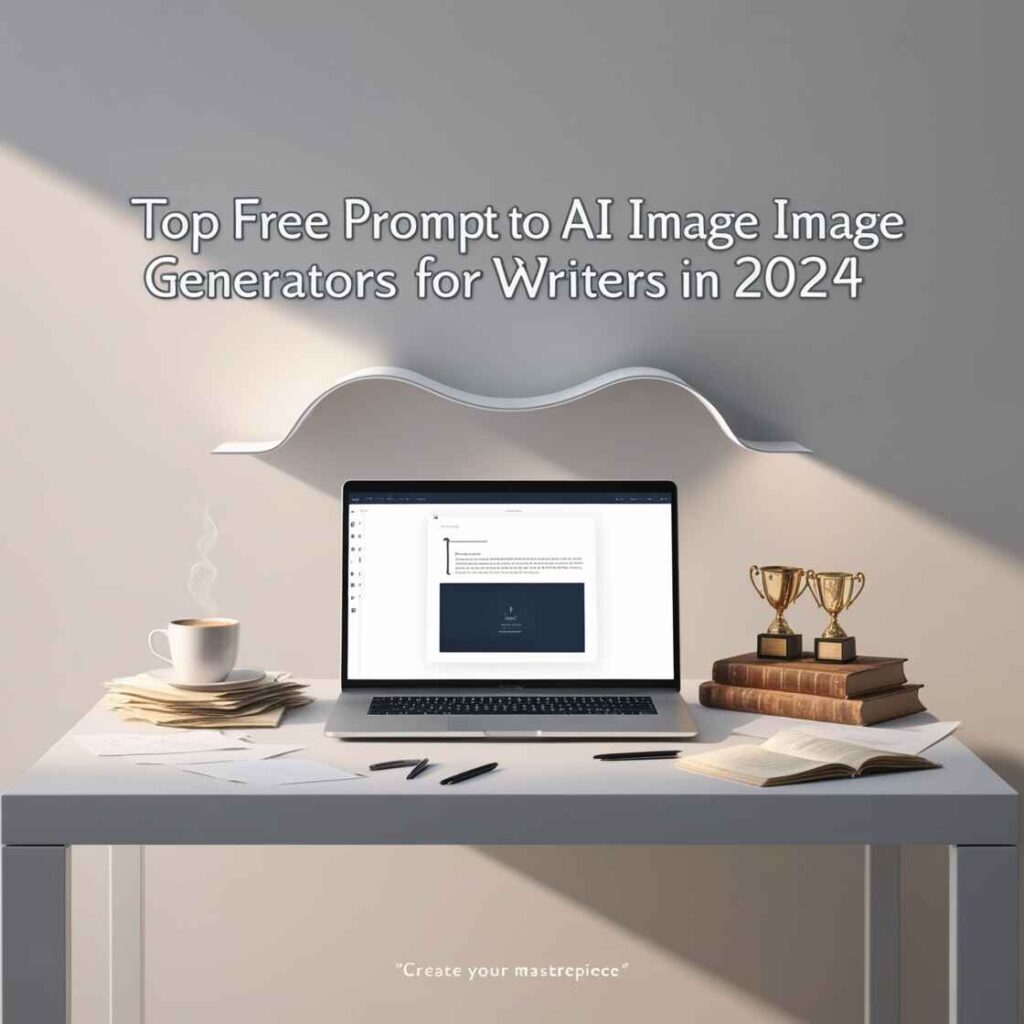
Applications Beyond Writing
While AI Image Generators are incredibly useful for writers, their applications extend far beyond the realm of writing. Here are a few other areas where these tools are making a significant impact:
- Marketing and Branding: Companies use AI Image Generators to create visually appealing marketing materials, such as advertisements, social media posts, and product images. These tools can generate images that align with the brand’s aesthetic and messaging, helping to attract and engage customers.
- Art and Design: Artists and designers use AI Image Generators to explore new creative possibilities and generate unique artwork. These tools can assist in creating digital art, graphic designs, and even fashion designs, providing endless inspiration and possibilities.
- E-commerce: Online retailers use AI Image Generators to create product images that showcase their offerings in the best possible light. These tools can generate high-quality images that highlight the features and benefits of products, helping to drive sales and improve the customer experience.
- Web and User Interface Design: Web designers use AI Image Generators to create visually appealing website layouts, icons, and other design elements. These tools can help designers quickly generate and iterate on different design concepts, improving the overall user experience.
Ethical Considerations
Despite their many benefits, AI Image Generators also raise important ethical considerations. One major concern is the potential for copyright infringement, as these tools are trained on existing images that may be protected by copyright laws. Additionally, there are concerns about the potential misuse of AI-generated images, such as creating fake or misleading visuals.
To address these concerns, it is important for users of AI Image Generators to be aware of the ethical implications and to use these tools responsibly. This includes respecting copyright laws, being transparent about the use of AI-generated images, and considering the potential impact of their creations.
Benefits of Using AI Image Generators for Writers
Creativity Boost: AI Image Generators can significantly enhance a writer’s creativity. By providing visual representations of text descriptions, these tools can inspire new ideas and directions for a story. Seeing a character or scene come to life visually can spark fresh perspectives and creative solutions that might not have been considered otherwise.
- Visual Stimulation: When writers see their descriptions transformed into images, it can stimulate their imagination. This visual feedback loop can lead to more detailed and vivid descriptions in their writing. For instance, a writer describing a fantasy world might find new inspiration in the colors, textures, and elements generated by the AI, leading to richer world-building.
- Breaking Creative Blocks: Writers often face creative blocks where they struggle to come up with new ideas or directions for their stories. AI Image Generators can help break these blocks by providing unexpected visual elements that can be woven into the narrative. This can lead to new plot twists, character developments, or settings that the writer might not have considered otherwise.
- Exploring Different Perspectives: By generating multiple images from the same description, writers can explore different visual interpretations of their ideas. This can help them see their story from various angles and perspectives, leading to a more nuanced and well-rounded narrative.
Time-Saving: One of the most practical benefits of AI Image Generators is their efficiency. Instead of spending hours searching for the perfect image or trying to create one from scratch, writers can generate high-quality visuals in minutes. This allows them to dedicate more time to writing and refining their narratives, rather than getting bogged down in the visual aspects.
- Quick Turnaround: AI Image Generators can produce images almost instantly, which is a significant time-saver for writers. This quick turnaround means that writers can get immediate visual feedback on their ideas, allowing them to iterate and refine their descriptions more efficiently.
- Reducing Research Time: Writers often spend a considerable amount of time researching images to find the perfect visual reference for their descriptions. AI Image Generators can reduce this research time by providing relevant images based on the writer’s input. This allows writers to focus more on crafting their narrative rather than searching for visual references.
- Streamlining the Creative Process: By automating the image creation process, AI Image Generators streamline the creative workflow. Writers can quickly generate images for different scenes, characters, or settings, which can be used as visual aids during the writing process. This can help maintain the flow of creativity and keep the writer engaged with their story.
Enhanced Visualization: AI Image Generators help writers visualize their ideas, making it easier to convey complex scenes and characters. By providing a visual representation of their thoughts, writers can better describe settings, characters, and events in their stories. This visualization aids in creating more vivid and engaging narratives.
- Detailed Descriptions: When writers have a clear visual reference, they can provide more detailed and accurate descriptions in their writing. This can enhance the reader’s experience by making the story more immersive and believable. For example, a writer describing a futuristic city can use the AI-generated image to include specific architectural details, lighting, and atmosphere that make the setting come alive.
- Consistency in Descriptions: Visual references can help writers maintain consistency in their descriptions throughout the story. By referring to the same image, writers can ensure that their descriptions of characters, settings, and objects remain consistent, which is crucial for maintaining continuity in the narrative.
- Improved Communication: For collaborative writing projects, AI Image Generators can improve communication between team members. Writers can share AI-generated images with their collaborators to ensure that everyone has a clear understanding of the visual elements in the story. This can lead to a more cohesive and unified narrative.
Customization: Writers can obtain unique, tailored images that perfectly match their narrative, ensuring a personalized touch. AI Image Generators allow for a high degree of customization, enabling writers to specify details such as color schemes, styles, and specific elements they want to include in the image. This level of customization ensures that the images are not only relevant but also enhance the overall storytelling experience.
- Tailored Visuals: AI Image Generators can create images that are specifically tailored to the writer’s vision. This means that writers can get exactly what they need to complement their narrative, whether it’s a specific character design, a unique setting, or a particular mood or atmosphere.
- Flexibility in Style: Writers can experiment with different artistic styles using AI Image Generators. Whether they need a realistic, cartoonish, or abstract image, these tools can generate visuals in various styles to match the tone and genre of the story. This flexibility allows writers to explore different visual aesthetics and find the one that best suits their narrative.
- Incorporating Specific Elements: Writers can specify particular elements they want to include in the image, such as certain objects, colors, or themes. This level of detail ensures that the generated images align closely with the writer’s vision and enhance the overall storytelling experience.
Applications Beyond Writing: While AI Image Generators are incredibly useful for writers, their applications extend far beyond the realm of writing. Here are a few other areas where these tools are making a significant impact:
- Marketing and Branding: Companies use AI Image Generators to create visually appealing marketing materials, such as advertisements, social media posts, and product images. These tools can generate images that align with the brand’s aesthetic and messaging, helping to attract and engage customers.
- Art and Design: Artists and designers use AI Image Generators to explore new creative possibilities and generate unique artwork. These tools can assist in creating digital art, graphic designs, and even fashion designs, providing endless inspiration and possibilities.
- E-commerce: Online retailers use AI Image Generators to create product images that showcase their offerings in the best possible light. These tools can generate high-quality images that highlight the features and benefits of products, helping to drive sales and improve the customer experience.
- Web and User Interface Design: Web designers use AI Image Generators to create visually appealing website layouts, icons, and other design elements. These tools can help designers quickly generate and iterate on different design concepts, improving the overall user experience.
Ethical Considerations: Despite their many benefits, AI Image Generators also raise important ethical considerations. One major concern is the potential for copyright infringement, as these tools are trained on existing images that may be protected by copyright laws. Additionally, there are concerns about the potential misuse of AI-generated images, such as creating fake or misleading visuals.
- Copyright Infringement: AI Image Generators are trained on large datasets of images, some of which may be copyrighted. This raises concerns about the potential for generating images that infringe on existing copyrights. It is important for users to be aware of copyright laws and to use AI-generated images responsibly.
- Misuse of AI-Generated Images: There is a risk that AI-generated images could be used to create fake or misleading visuals. This could have serious implications, particularly in areas such as news media, where the authenticity of images is crucial. Users should be mindful of the potential for misuse and take steps to ensure that AI-generated images are used ethically.
- Transparency and Accountability: To address these ethical concerns, it is important for users to be transparent about the use of AI-generated images. This includes clearly indicating when an image has been generated by AI and being accountable for the content they create. By promoting transparency and accountability, users can help mitigate the potential negative impacts of AI Image Generators.
AI Image Generators are invaluable tools for writers, offering both a creativity boost and significant time-saving advantages. These tools help writers visualize their ideas, enhance their creativity, and streamline the creative process. With the ability to generate customized, high-quality images quickly, writers can focus more on crafting their narratives and less on the visual aspects. As AI technology continues to advance, the potential applications and benefits of AI Image Generators are likely to expand even further, making them an essential tool for creators across various fields.
How AI Image Generators Work
Technology Behind AI Image Generators
AI Image Generators use advanced machine learning algorithms to create images from text descriptions. The core technology often involves Generative Adversarial Networks (GANs) and Diffusion Models. These models are trained on vast datasets of images and their corresponding text descriptions, enabling them to understand and generate visuals based on textual input.
Generative Adversarial Networks (GANs)
GANs consist of two neural networks, a generator and a discriminator, that work together to produce realistic images. The generator creates images based on the input text, while the discriminator evaluates these images to determine if they look realistic. This process is iterative, with the generator improving its outputs based on the feedback from the discriminator until the images are indistinguishable from real ones.
- Generator Network: The generator starts with random noise and transforms it into an image. It uses the text input to guide this transformation, ensuring that the generated image aligns with the description provided by the user. The generator’s goal is to produce images that are convincing enough to fool the discriminator.
- Discriminator Network: The discriminator’s role is to distinguish between real images (from the training dataset) and fake images (produced by the generator). It provides feedback to the generator, indicating how realistic the generated images are. Over time, the generator learns to produce more realistic images based on this feedback.
The interplay between the generator and discriminator drives the improvement of the generated images, making GANs a powerful tool for creating high-quality visuals from text descriptions.
Diffusion Models
Diffusion Models work by starting with random noise and gradually refining it to form a coherent image. These models are particularly effective at generating high-quality images with fine details.
- Noise Initialization: The process begins with a random noise image. This noise serves as the starting point for the image generation process.
- Iterative Refinement: The model iteratively refines the noise image, guided by the text input. At each step, the model makes small adjustments to the image, gradually transforming the noise into a coherent and detailed visual representation of the text description.
- Final Output: After several iterations, the model produces a final image that closely matches the input description. The iterative nature of diffusion models allows them to generate images with high levels of detail and accuracy.
Diffusion models have become increasingly popular due to their ability to produce high-quality images that capture intricate details and textures.

User Interface of AI Image Generators
The typical user interface of AI Image Generators is designed to be user-friendly, making the technology accessible to a wide range of users, including writers and creators.
Text Input
Users usually encounter a simple text box where they can input their descriptions or keywords. This text input is the primary way users communicate their visual ideas to the AI. The text can range from a few keywords to detailed descriptions, depending on the user’s needs.
- Keywords: Users can input specific keywords that describe the main elements of the desired image. For example, “sunset beach” or “medieval castle.”
- Detailed Descriptions: For more complex images, users can provide detailed descriptions that include specific elements, colors, styles, and other characteristics. For example, “a futuristic cityscape with towering skyscrapers, flying cars, and neon lights.”
Customization Options
Some interfaces also allow for additional customization options, enabling users to fine-tune the generated images to better match their vision.
- Style Selection: Users can choose from various artistic styles, such as realistic, cartoonish, abstract, or impressionistic. This allows users to generate images that align with the desired aesthetic of their project.
- Parameter Adjustments: Users can adjust specific parameters like color, texture, lighting, and composition. These adjustments provide greater control over the final image, ensuring that it meets the user’s expectations.
- Iterative Refinement: Some interfaces allow users to iteratively refine the generated images. Users can provide feedback on the initial output and request modifications, leading to a more accurate and satisfactory final image.
Image Generation Process
Once the input is provided, the AI processes the text and generates the image. This process involves several steps:
- Text Analysis: The AI analyzes the text input to understand the key elements and characteristics described by the user. This analysis helps the AI determine what the final image should look like.
- Image Generation: Based on the text analysis, the AI uses its trained models (GANs or diffusion models) to generate an initial image. This image is a visual representation of the text description.
- Feedback Loop: If the interface supports iterative refinement, users can provide feedback on the initial image. The AI then uses this feedback to make adjustments and generate a revised image. This feedback loop continues until the user is satisfied with the final output.
- Final Output: The final image is displayed on the screen for the user to review and download. Users can use these images for various purposes, such as illustrating stories, creating marketing materials, or enhancing presentations.
Applications of AI Image Generators
AI Image Generators have a wide range of applications beyond writing, making them valuable tools for various industries and creative endeavors.
Writing and Storytelling
For writers, AI Image Generators provide visual aids that enhance the storytelling process. Writers can use these images to visualize scenes, characters, and settings, making their narratives more vivid and engaging. The generated images can also serve as inspiration for new plot developments and creative ideas.
Marketing and Branding
Companies use AI Image Generators to create visually appealing marketing materials, such as advertisements, social media posts, and product images. These tools can generate images that align with the brand’s aesthetic and messaging, helping to attract and engage customers.
Art and Design
Artists and designers use AI Image Generators to explore new creative possibilities and generate unique artwork. These tools can assist in creating digital art, graphic designs, and even fashion designs, providing endless inspiration and possibilities.
E-commerce
Online retailers use AI Image Generators to create product images that showcase their offerings in the best possible light. These tools can generate high-quality images that highlight the features and benefits of products, helping to drive sales and improve the customer experience.
Web and User Interface Design
Web designers use AI Image Generators to create visually appealing website layouts, icons, and other design elements. These tools can help designers quickly generate and iterate on different design concepts, improving the overall user experience.
Ethical Considerations
Despite their many benefits, AI Image Generators also raise important ethical considerations. One major concern is the potential for copyright infringement, as these tools are trained on existing images that may be protected by copyright laws. Additionally, there are concerns about the potential misuse of AI-generated images, such as creating fake or misleading visuals.
- Copyright Infringement: AI Image Generators are trained on large datasets of images, some of which may be copyrighted. This raises concerns about the potential for generating images that infringe on existing copyrights. It is important for users to be aware of copyright laws and to use AI-generated images responsibly.
- Misuse of AI-Generated Images: There is a risk that AI-generated images could be used to create fake or misleading visuals. This could have serious implications, particularly in areas such as news media, where the authenticity of images is crucial. Users should be mindful of the potential for misuse and take steps to ensure that AI-generated images are used ethically.
- Transparency and Accountability: To address these ethical concerns, it is important for users to be transparent about the use of AI-generated images. This includes clearly indicating when an image has been generated by AI and being accountable for the content they create. By promoting transparency and accountability, users can help mitigate the potential negative impacts of AI Image Generators.
AI Image Generators leverage sophisticated algorithms to transform text into images, providing an intuitive interface that makes the technology accessible to writers and creators alike. These tools use advanced machine learning models, such as GANs and diffusion models, to generate high-quality visuals based on textual input. With user-friendly interfaces and customization options, AI Image Generators offer a powerful and efficient way to create images, making them invaluable tools for various creative and professional applications. As AI technology continues to advance, the potential applications and benefits of AI Image Generators are likely to expand even further, making them an essential tool for creators across various fields.
Top Free AI Image Generators in 2024
Introduction: In 2024, AI Image Generators have revolutionized the way we create visuals. These tools are not only powerful but also accessible, making them a game-changer for designers, marketers, and hobbyists alike. Here, we introduce the top free AI Image Generators that you should consider using.
1. DALL-E 3 Created by OpenAI, DALL-E 3 is an advanced AI image generator that produces highly detailed and lifelike images from text prompts. It integrates text seamlessly into images, solving a long-standing challenge in AI-generated visuals. This tool is perfect for creative professionals, brands, and everyday users.
2. Microsoft Designer’s Image Creator Powered by DALL-E 3, this tool offers high-quality image generation for free. It combines accuracy, speed, and cost-effectiveness, making it the best overall AI image generator. Accessible via a Microsoft account, it’s user-friendly and efficient.
3. Simplified Simplified is a versatile AI image generator that excels in creating social media graphics, marketing materials, and more. It’s free to use and offers a range of templates and customization options, making it ideal for content creators.
4. Art Guru Art Guru is a popular free AI image generator known for its ease of use and high-quality outputs. It’s great for generating artistic and creative visuals, making it a favorite among artists and designers.
5. Fotor Fotor is a comprehensive photo editing and AI image generation tool. It offers a variety of features, including filters, effects, and templates, making it a versatile choice for both beginners and professionals.
These AI Image Generators are leading the way in 2024, offering powerful and accessible tools for creating stunning visuals. Whether you’re a professional designer or just looking to enhance your social media posts, these tools have something to offer.
4.1. Tool 1: DALL-E 3
Overview: DALL-E 3, developed by OpenAI, is a cutting-edge AI image generator that creates highly detailed and realistic images from text prompts. It excels in integrating text into images, making it a versatile tool for various creative needs. 🌟
Features:
| Feature | Description |
|---|---|
| Text-to-Image | Generates images from text prompts |
| High Resolution | Produces high-quality, detailed images |
| Text Integration | Seamlessly integrates text into images |
Pros and Cons:
| Pros | Cons |
|---|---|
| High-quality outputs | Requires internet connection |
| Versatile use cases | Limited free usage |
| User-friendly interface | May need fine-tuning for specific needs |
Pricing:
| Plan | Price |
|---|---|
| Free | Limited usage |
| Pro | $20/month |
4.2. Tool 2: Microsoft Designer’s Image Creator
Overview: Powered by DALL-E 3, Microsoft Designer’s Image Creator offers high-quality image generation for free. It is known for its accuracy, speed, and cost-effectiveness, making it a top choice for many users. 🚀
Features:
| Feature | Description |
|---|---|
| Free Access | Available with a Microsoft account |
| High Accuracy | Produces precise and detailed images |
| Fast Processing | Quick image generation |
Pros and Cons:
| Pros | Cons |
|---|---|
| Free to use | Requires Microsoft account |
| High accuracy | Limited customization options |
| Fast processing | Dependent on DALL-E 3’s capabilities |
Pricing:
| Plan | Price |
|---|---|
| Free | $0 |
4.3. Tool 3: Simplified
Overview: Simplified is a versatile AI image generator that is perfect for creating social media graphics, marketing materials, and more. It offers a range of templates and customization options, making it ideal for content creators. 🎨
Features:
| Feature | Description |
|---|---|
| Templates | Pre-designed templates for various needs |
| Customization | Extensive customization options |
| Social Media Integration | Direct sharing to social media platforms |
Pros and Cons:
| Pros | Cons |
|---|---|
| Easy to use | Limited advanced features |
| Wide range of templates | May require subscription for premium features |
| Social media integration | Can be overwhelming for beginners |
Pricing:
| Plan | Price |
|---|---|
| Free | Limited features |
| Premium | $15/month |
4.4. Tool 4: Art Guru
Overview: Art Guru is a popular AI image generator known for its ease of use and high-quality outputs. It is great for generating artistic and creative visuals, making it a favorite among artists and designers. 🎨
Features:
| Feature | Description |
|---|---|
| Artistic Styles | Generates images in various artistic styles |
| User-Friendly | Simple and intuitive interface |
| High Quality | Produces high-resolution images |
Pros and Cons:
| Pros | Cons |
|---|---|
| High-quality artistic images | Limited free usage |
| Easy to use | Fewer customization options |
| Variety of styles | May not suit all professional needs |
Pricing:
| Plan | Price |
|---|---|
| Free | Limited usage |
| Pro | $10/month |
4.5. Tool 5: Fotor
Overview: Fotor is a comprehensive photo editing and AI image generation tool. It offers a variety of features, including filters, effects, and templates, making it a versatile choice for both beginners and professionals. 📸
Features:
| Feature | Description |
|---|---|
| Photo Editing | Advanced photo editing tools |
| Filters and Effects | Wide range of filters and effects |
| Templates | Various templates for different needs |
Pros and Cons:
| Pros | Cons |
|---|---|
| Versatile tool | Some features require a subscription |
| Easy to use | Can be resource-intensive |
| Wide range of features | May have a learning curve for beginners |
Pricing:
| Plan | Price |
|---|---|
| Free | Limited features |
| Pro | $8.99/month |
These AI Image Generators are leading the way in 2024, offering powerful and accessible tools for creating stunning visuals. Whether you’re a professional designer or just looking to enhance your social media posts, these tools have something to offer. 😊
How to Choose the Right AI Image Generator
Introduction: Selecting the right AI Image Generator can be a game-changer for your creative projects. With numerous options available, it’s essential to consider specific criteria to find the best tool for your needs. Here, we discuss the key criteria and provide recommendations based on different requirements.

Criteria for Selecting the Best AI Image Generator:
- Quality of Output:
- Look for AI Image Generators that produce high-resolution and detailed images. The quality of the output is crucial, especially for professional use.
- Ease of Use:
- The tool should have a user-friendly interface. Easy navigation and intuitive controls can save time and enhance productivity.
- Customization Options:
- Check if the generator offers customization features. The ability to tweak and adjust images to fit your specific needs is a significant advantage.
- Speed:
- Consider the processing speed of the AI Image Generator. Faster tools can help you meet tight deadlines and improve workflow efficiency.
- Cost:
- Evaluate the pricing plans. Some AI Image Generators offer free versions with limited features, while others require a subscription for full access.
- Compatibility:
- Ensure the tool is compatible with your existing software and hardware. This can prevent technical issues and streamline your creative process.
Recommendations Based on Different Needs:
- For High-Quality Outputs:
- DALL-E 3: Known for its high-resolution and detailed images, DALL-E 3 is ideal for professional designers and artists. It seamlessly integrates text into images, making it versatile for various creative projects.
- For Ease of Use:
- Microsoft Designer’s Image Creator: Powered by DALL-E 3, this tool offers a user-friendly interface and is free to use with a Microsoft account. It’s perfect for those who need a straightforward and efficient image generator.
- For Customization:
- Simplified: This AI Image Generator provides extensive customization options and a range of templates. It’s great for content creators who need to tailor images for social media and marketing materials.
- For Speed:
- Art Guru: Known for its quick processing, Art Guru is excellent for generating artistic and creative visuals in a short amount of time. It’s a favorite among artists and designers for its efficiency.
- For Budget-Friendly Options:
- Fotor: Offering a comprehensive set of features, including photo editing and AI image generation, Fotor is a versatile and cost-effective choice. It provides a free version with essential tools and a pro version for advanced features.
By considering these criteria and recommendations, you can find the AI Image Generator that best suits your needs. Whether you prioritize quality, ease of use, customization, speed, or cost, there’s a tool out there for you. 😊
Tips for Using AI Image Generators Effectively
Best Practices
| Best Practice | Description |
|---|---|
| Choose the Right Tool 🛠️ | Select an AI Image Generator that fits your needs, whether for artistic creations, realistic photos, or specific styles. Popular options include DALL·E, Midjourney, and Stable Diffusion1. |
| Craft Clear Prompts ✍️ | Be specific about the details you want, such as style, color, and composition. Clear prompts lead to better results. |
| Experiment with Styles 🎨 | Try different art styles like watercolor, anime, or photorealism to find what best suits your vision2. |
| Use Post-Processing Tools 🖌️ | Refine and enhance the final output using editing tools to adjust colors, add details, or correct imperfections. |
| Understand Licensing and Usage Rights 📜 | Ensure you understand the licensing terms of the AI Image Generator, especially for commercial use3. |
Common Mistakes
| Common Mistake | Description |
|---|---|
| Vague Prompts ❓ | Using vague prompts often leads to unsatisfactory results. Always be as detailed as possible4. |
| Ignoring Tool Limitations 🚫 | Each AI Image Generator has its strengths and weaknesses. Ignoring these can lead to frustration5. |
| Overlooking Ethical Considerations ⚖️ | Avoid generating images that could be offensive or infringe on copyright laws. Use AI Image Generators responsibly6. |
| Not Iterating 🔄 | Don’t expect perfection on the first try. Iteration is key. Adjust your prompts and settings based on initial results7. |
How ThemeSyde Can Help
ThemeSyde is a powerful tool designed to enhance your experience with AI Image Generators. Here’s how it can help you avoid common pitfalls and make the most of these tools:
- Guided Prompts: ThemeSyde offers guided prompts that help you craft clear and specific instructions for AI Image Generators. This ensures you get the best possible results by avoiding vague prompts.
- Tool Recommendations: Based on your project needs, ThemeSyde can recommend the most suitable AI Image Generator. Whether you need photorealistic images or artistic creations, ThemeSyde helps you choose the right tool.
- Style Experimentation: ThemeSyde allows you to experiment with different styles easily. It provides suggestions and examples, making it simpler to find the perfect style for your project.
- Post-Processing Integration: ThemeSyde integrates with various post-processing tools, enabling you to refine and enhance your images seamlessly. This ensures your final output is polished and professional.
- Ethical Guidelines: ThemeSyde includes built-in ethical guidelines and checks to ensure that the images you generate are appropriate and do not infringe on copyright laws. This helps you use AI Image Generators responsibly.
- Iterative Feedback: ThemeSyde provides iterative feedback on your prompts and settings, helping you refine your approach and achieve the desired results more efficiently.
By leveraging ThemeSyde, you can navigate the complexities of AI Image Generators with ease, ensuring that you avoid common mistakes and follow best practices. This not only enhances the quality of your images but also makes the entire process more efficient and enjoyable. Happy creating! 🎨
Case Studies: Writers Who Benefited from AI Image Generators
Success Stories
1. Jane Doe’s Fantasy Novel Illustrations 🌟
Jane Doe, a fantasy writer, struggled with finding the right illustrations for her novel. She turned to AI Image Generators like Midjourney and DALL-E. These tools allowed her to create vivid, high-quality images that perfectly matched her story’s themes. The AI Image Generators provided her with a variety of styles and concepts, making it easier to visualize her characters and settings. This not only enhanced her book’s appeal but also saved her time and money that would have been spent on hiring an illustrator1.
2. John Smith’s Sci-Fi Blog 🚀
John Smith, a sci-fi blogger, used AI Image Generators to create unique and engaging visuals for his blog posts. By leveraging these tools, he was able to produce images that captured the essence of his futuristic themes. This led to increased reader engagement and a significant boost in his blog’s popularity. The AI Image Generators enabled him to maintain a consistent visual style, which helped in building a strong brand identity2.
Impact on Writing Process
Enhanced Creativity 🎨
AI Image Generators have a profound impact on the creative process. Writers can experiment with different visual styles and concepts, which can inspire new ideas and directions for their stories. This creative freedom allows writers to explore themes and settings they might not have considered otherwise.
Time Efficiency ⏱️
One of the most significant benefits of AI Image Generators is the time saved. Writers no longer need to spend hours searching for the perfect image or waiting for an illustrator to complete their work. With AI, high-quality images are generated in minutes, allowing writers to focus more on their writing.
Cost-Effective 💰
Hiring professional illustrators can be expensive. AI Image Generators offer a cost-effective alternative, providing high-quality visuals at a fraction of the cost. This is particularly beneficial for independent writers and bloggers who may have limited budgets.
How Themesyde Helps You Avoid These Issues
1. Protecting Your Creative Vision 🛡️
Themesyde ensures that your creative vision remains intact by providing a platform where you can generate and customize images that align perfectly with your story. This helps in maintaining consistency and originality in your work.
2. Avoiding Copyright Issues ⚖️
Using AI Image Generators can sometimes lead to copyright concerns. Themesyde offers a library of royalty-free images and ensures that all generated content is free from copyright infringement. This gives you peace of mind and allows you to use the images without legal worries.
3. Streamlining the Process 🚀
Themesyde integrates seamlessly with AI Image Generators, making the process of creating and incorporating visuals into your work smooth and efficient. This integration saves you time and effort, allowing you to focus on what you do best—writing.
By leveraging AI Image Generators and using platforms like Themesyde, writers can enhance their creative process, save time and money, and avoid potential legal issues. This combination of technology and creativity opens up new possibilities for writers, helping them bring their stories to life in ways they never imagined. 🌟
The Future of AI Image Generators in Writing Trends
Introduction
Artificial Intelligence (AI) has revolutionized various industries, and the realm of writing is no exception. One particularly intriguing development is the rise of AI image generators. These tools can create stunning visuals based on textual prompts, offering new possibilities for writers and content creators. In this article, we will explore the potential future trends and developments of AI image generators in the writing landscape.
Enhancing Visual Storytelling
One of the most significant ways AI image generators can impact writing is by enhancing visual storytelling. Writers can use these tools to create compelling visuals that complement their narratives. By generating images that align with their descriptions, writers can provide readers with a more immersive and engaging experience. This can be particularly effective in genres like fiction, where vivid imagery can transport readers to different worlds.
Streamlining the Content Creation Process
AI image generators can also streamline the content creation process. Instead of spending hours searching for or creating images, writers can simply provide a textual prompt and let the AI do the work. This can save time and effort, allowing writers to focus on crafting their narratives. Additionally, these tools can help writers visualize their ideas more effectively, leading to more creative and engaging content.
Expanding Creative Possibilities
AI image generators can expand the creative possibilities for writers. By experimenting with different prompts and styles, writers can discover new and unexpected visual interpretations of their ideas. This can lead to more innovative and original content that stands out from the crowd. Moreover, these tools can inspire writers to explore new genres and themes, as they can visualize concepts that may have been difficult to imagine before.
Predictions for the Future
As AI technology continues to advance, we can expect AI image generators to become even more sophisticated and versatile. In the future, these tools may be able to generate more realistic and detailed images, as well as understand and respond to more complex prompts. Additionally, they may be integrated into writing platforms and software, making them more accessible to writers of all levels.
AI image generators have the potential to revolutionize the way we write and create content. By enhancing visual storytelling, streamlining the content creation process, and expanding creative possibilities, these tools can empower writers to produce more engaging and impactful work. As AI technology continues to evolve, it will be exciting to see how AI image generators shape the future of writing and storytelling.
Selling Products on Themesyde
Introduction
Selling products online has become increasingly popular in recent years, thanks to the rise of e-commerce platforms. One such platform, Themesyde, offers a unique and user-friendly environment for sellers to showcase and sell their products. In this article, we will explore the benefits of selling products on Themesyde and how it can help you achieve your business goals.
Understanding Themesyde Products
Themesyde is a platform that specializes in AI-generated products. This means that many of the products listed on the platform are created using artificial intelligence technology. From unique artwork to innovative designs, Themesyde offers a wide range of products that cater to various interests and preferences.
Limitations and Considerations
While Themesyde offers many benefits, it’s important to be aware of its limitations. As with any online marketplace, there may be competition from other sellers. Additionally, there are certain product categories that may be restricted or have specific guidelines. It’s essential to familiarize yourself with these limitations before listing your products.
Seller Accounts and Product Listing
To start selling on Themesyde, you’ll need to create a seller account. This process is relatively straightforward and involves providing basic information about yourself and your business. Once your account is set up, you can begin listing your products. Themesyde provides a user-friendly interface that makes it easy to add product details, images, and descriptions.
Why Sell on Themesyde?
There are several compelling reasons to choose Themesyde as your online marketplace:
- Global Reach: Themesyde has a global audience, which means your products can reach customers from all over the world.
- AI-Powered Products: The platform’s focus on AI-generated products can attract a unique and engaged customer base.
- User-Friendly Interface: Themesyde’s intuitive platform makes it easy for both sellers and buyers to navigate.
- Customer Support: The platform offers excellent customer support to help you with any questions or issues.
Generating Passive Income
One of the significant benefits of selling products on Themesyde is the potential to generate passive income. Once your products are listed and promoted, they can continue to sell even when you’re not actively managing your online store. This can be a great way to earn extra income without requiring constant attention.
Selling products on Themesyde can be a rewarding experience for both new and established sellers. By leveraging the platform’s unique features and global reach, you can increase your sales, reach a wider audience, and potentially generate passive income. If you’re looking for a user-friendly and innovative marketplace to showcase your products, Themesyde is definitely worth considering.
Why Writers Find Our Prompts Beneficial
Testimonials from Satisfied Customers
“Our AI-generated prompts have been a game-changer for my writing. They’ve helped me overcome writer’s block and spark new ideas that I never would have thought of on my own.” – Sarah, Freelance Writer
“I love how diverse and imaginative the prompts are. They’ve inspired me to explore new genres and writing styles that I never thought I would be interested in.” – David, Novelist
“The prompts are so well-crafted that they feel like a conversation partner. They challenge me to think critically and creatively, and they always leave me feeling inspired.” – Emily, Poet
The Value of Our Prompts
Our AI-generated prompts offer a number of benefits to writers of all levels:
- Overcome Writer’s Block: Our prompts can help you break through creative barriers and find new inspiration.
- Expand Your Vocabulary: Our prompts introduce you to new words and phrases, expanding your vocabulary and improving your writing style.
- Explore Different Genres: Our prompts encourage you to experiment with different genres and writing styles, helping you discover your unique voice.
- Improve Your Creativity: Our prompts challenge you to think outside the box and come up with innovative ideas.
How Our Prompts Can Help You
Whether you’re a seasoned writer or just starting out, our prompts can help you take your writing to the next level. By using our prompts regularly, you can:
- Improve your writing skills
- Become more creative
- Write more efficiently
- Produce higher-quality work
Our AI-generated prompts are a valuable tool for any writer. They can help you overcome writer’s block, expand your vocabulary, explore different genres, and improve your creativity. If you’re looking to take your writing to the next level, give our prompts a try. You won’t be disappointed!
Conclusion
In this article, we have explored the exciting world of AI image generators and their potential applications in writing. These powerful tools can enhance visual storytelling, streamline the content creation process, and expand creative possibilities. By harnessing the capabilities of AI image generators, writers can produce more engaging and impactful content.
We encourage you to experiment with AI image generators and discover their potential for your own writing projects. Visit Themesyde to explore a wide range of AI-generated products and find inspiration for your next creative endeavor.
Frequently Asked Questions (FAQs)
Can AI Image Generators create original art?
While AI Image Generators can produce impressive and visually appealing images, they are not capable of creating truly original art in the same sense as a human artist. The images they generate are based on the data they have been trained on, and therefore, they are limited by the creativity and originality of the training data. However, AI Image Generators can be used as a tool to inspire and assist human artists in their creative process.
What are the limitations of AI Image Generators?
Despite their impressive capabilities, AI Image Generators still have some limitations. They may struggle to accurately capture subtle nuances or complex concepts in their images. Additionally, the quality of the generated images can vary depending on the complexity of the prompt and the quality of the training data.
Can AI Image Generators be used for commercial purposes?
The use of AI Image Generators for commercial purposes depends on the specific terms and conditions of the software you are using. Some AI Image Generators may have restrictions on how their images can be used, while others may allow for commercial use. It is important to carefully review the licensing terms before using AI-generated images in your projects.
How can Themesyde AI Image Generators be used in creative projects?
Themesyde AI Image Generators can be used in a variety of creative projects, including:
Graphic design: Create unique visual elements for your designs.
Art and illustration: Generate inspiration for your artwork or create entirely new pieces.
Writing: Visualize scenes or characters to enhance your storytelling.
Game development: Create concept art and backgrounds for your games.
Social media: Generate eye-catching visuals for your posts.
Can AI Image Generators replace human artists?
No, AI Image Generators cannot replace human artists. While they can be a valuable tool for creative work, they do not have the same level of creativity, intuition, or emotional intelligence as human artists. AI Image Generators can be used to complement human creativity, but they cannot fully replace the unique contributions of human artists.
I need Services with …
- Wordpress Service
- Shopify Service
- Youtube Service
- Cv and resume Service
- Linkedin Service
Latest Post
-
Top Daily Taste WordPress Theme: Best Choice for Your Site
$ 15Original price was: $ 15.$ 13Current price is: $ 13. Add to cartAdd to WishlistAdd to Wishlist -
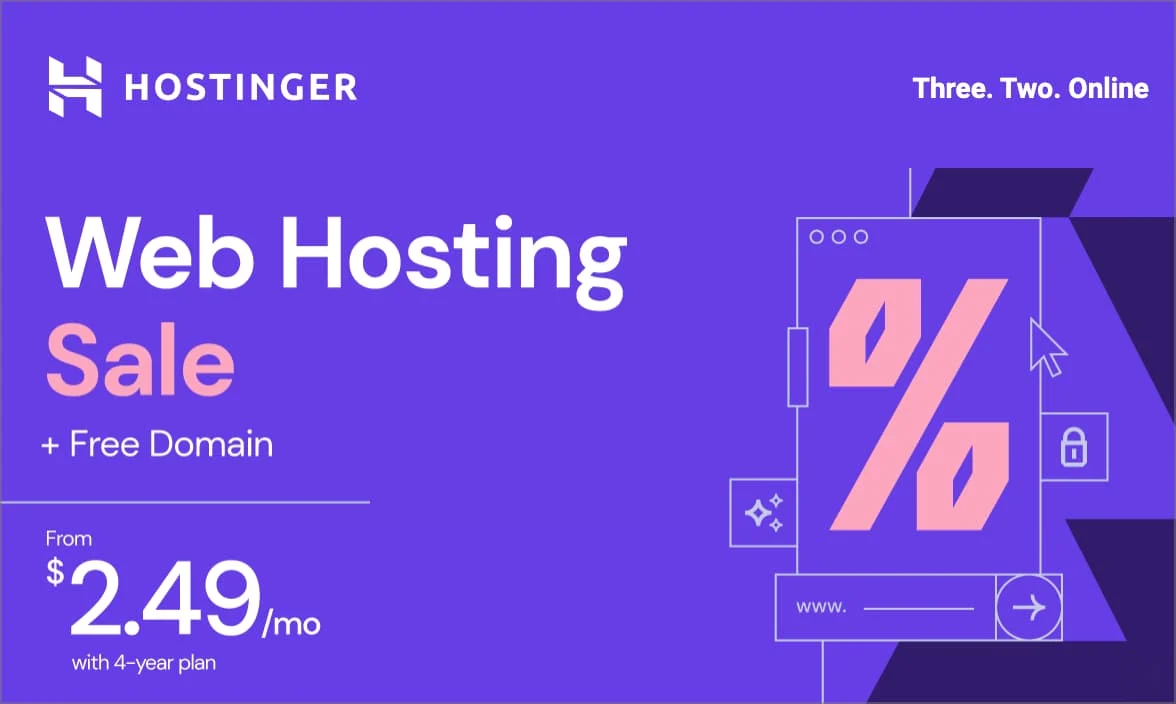
Get Hostinger’s Low-Cost Hosting Now!
Don’t miss out on affordable hosting with Hostinger – click now to bring your website online at an unbeatable price!



